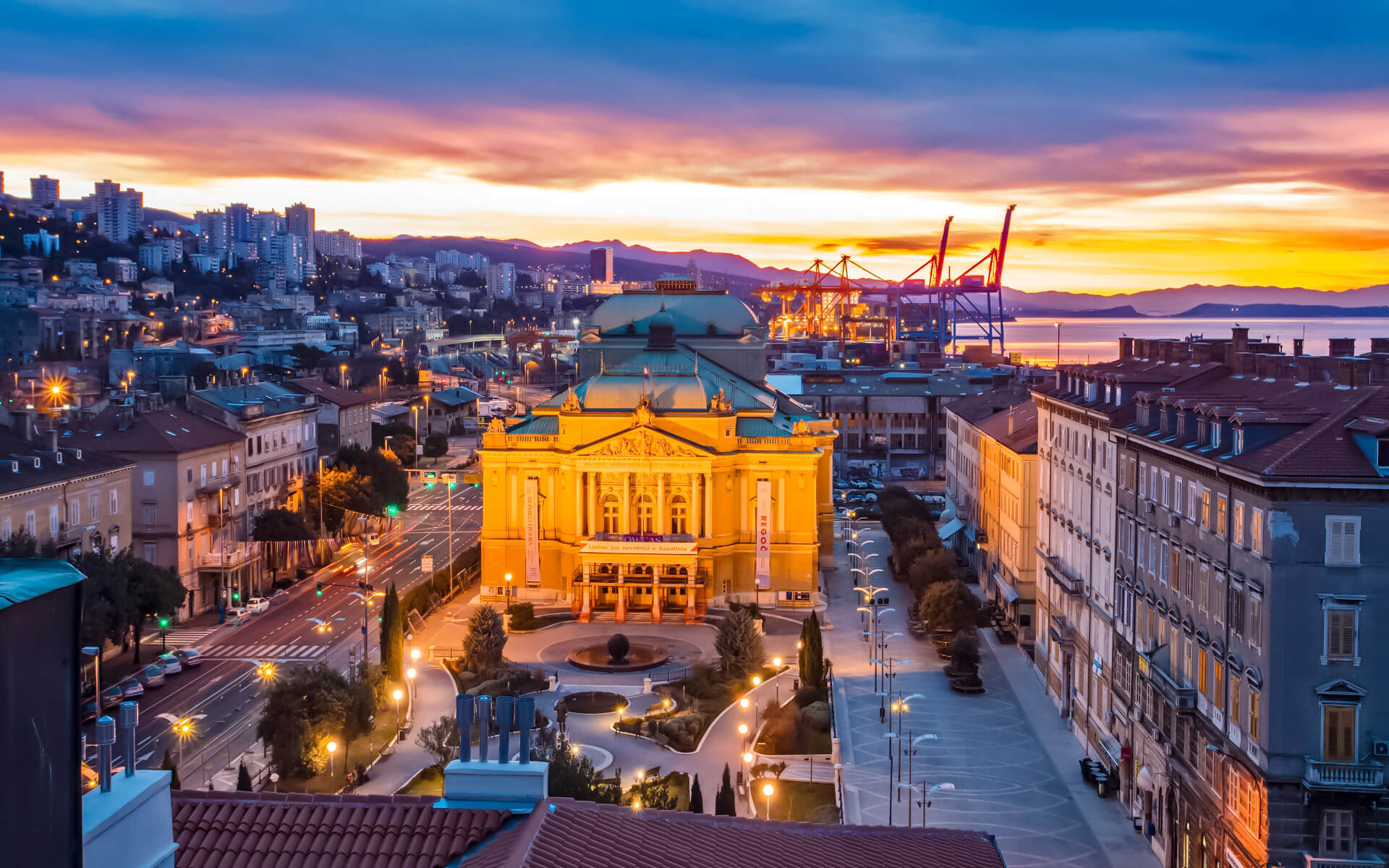Rijeka is a one-of-a-kind cosmopolitan city with a stormy past, particularly throughout the twentieth century. For example, Rijeka was administered by eight different nations between 1918 and 1991, therefore a Rijeka resident born in 1917 might conceivably have held eight different passports without ever leaving the city borders. The city developed a distinct local character as a result of the city’s frequent changes in occurrences.
Rijeka is a large Croatian port located in the centre of the Kvarner Gulf. Rijeka is a crossroads of land and sea routes, linked to the rest of the globe via air, bus, rail, and ship lines. Despite being classified as mostly an industrial and port city, Rijeka is a fascinating city with stunning architecture, particularly in the secession style, a decent selection of museums, and a lively nightlife.
Rijeka was a major European port at the turn of the twentieth century, with weekly passenger service to and from New York. The famed ship Carpathia, which rescued the majority of the Titanic survivors, was sailing from New York to Rijeka, and the majority of the crew was Croatian. As a result, one of the Titanic’s life-belts is now housed at the Rijeka Naval Museum.
Unfortunately, Rijeka was also the world’s first fascist state, before Mussolini’s Italy and Hitler’s Reich. The constitution of Reggenza Italiana del Carnaro (Italian Regency of Kvarner), a short-lived state formed in 1919 following a coup d’etat by Italian war veterans headed by Gabriele D’Annunzio, known as the “Fascist Pioneer,” had a blend of fascism, anarchist, and elements of dadaism. To make matters worse, this outlandish entity was the first foreign state to recognize Lenin’s USSR.
On the plus side, Rijeka was an autonomous neutral state from 1920 to 1924. Rijeka had independence and neutrality thanks to a status comparable to that of Gdansk later on. In order to ensure optimum care for all minorities in the city, the official languages in the Free State of Rijeka were Croatian, Italian, and Hungarian.
In 1919, Woodrow Wilson, President of the United States, proposed Rijeka as the head of the League of Nations. Following World War II, Rijeka was one of the contenders to host the United Nations headquarters. The plan was to restore the Independent State of Rijeka as a special UN neutral state.
Rijeka is made up of two historic cities that were divided by the river Rjeina. On the west was Fiume or Rijeka, while on the east was Suak, a competing counterpart to Rijeka primarily populated by Croatians and under Yugoslavian or Croatian governmental administration during the most of the 19th and early 20th centuries. In 1945, the two cities amalgamated. A broad pedestrian bridge was created in front of Hotel Kontinental, which was transformed into a plaza, to symbolically unite the city. Most people are unaware that there is a river underneath this large plaza. It is a popular gathering and socializing spot, particularly among the younger generations.
With coming to Rijeka, you are joining to the list of people together with Che Guevara, James Joyce, Franz Liszt, Dora Maar, Enrico Caruso, Benito Mussolini, Gabriele D’Annunzio, Josip Jelačić, Bobby Fischer, Saddam Husein, Gamal Abdel Nasser, Johnny Weissmueller, Pope John Paul II and many others that have been in Rijeka before.


